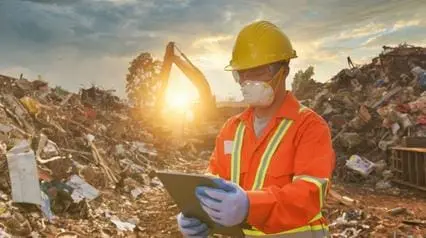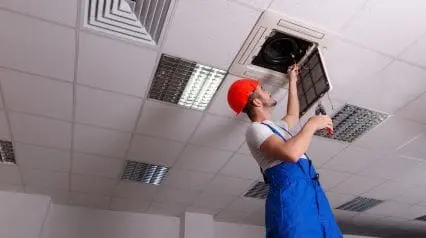What is Hazardous Waste Management?
Hazardous waste management is a complex process that includes collecting, treating, transporting, and disposing of or recycling waste that could cause substantial harm to humans and the environment.
This is considered by many as a huge environmental concern. Humans generate trillions of pounds of waste annually, but there aren’t enough spaces for disposal anymore. Governments are pushing for proper waste management, especially for the kind which poses a dire threat to life.
What is Hazardous Waste?
The US Environmental Protection Agency (EPA) defines hazardous waste as waste that has a dangerous effect on humans and their surroundings. This can originate from various sources and take different physical forms (liquid, solid, or gas).
It is hard to define a particular substance as hazardous, which is why the agency created a system that could help them identify and regulate it.
Here are four types of hazardous wastes based on their key characteristics:
- Ignitability – This type can cause a fire. Examples of this include gasoline, kerosene, and solvents.
- Corrosivity – Either very acidic or basic, this corrodes or eats away at surfaces or anything it comes in contact with. Lead batteries, rust removers, and caustic waste from hot tanks are a few examples.
- Reactivity – Unstable even in normal conditions, this type may explode or give off toxic gases. Pressurized aerosols, lithium-sulfur batteries, and bleach concentrates are all reactive.
- Toxicity – Whether ingested or absorbed, this has lethal effects on any living thing. Pentachlorophenol-treated wood, paint with metal pigments, and used oil filters with benzene or lead are just some examples.
Although radioactivity is also detrimental to living things, it is not included in the list above mainly because two other government agency deal with this material. Found in “mixed radiological and hazardous waste,” the Department of Energy (DOE) and the Nuclear Regulatory Commission (NRC) are responsible for handling it. The EPA covers the ‘hazardous’ component of this type of waste.
Another characteristic not included in the list above is infectious. Also referred to as biohazards, this type usually comes from hospitals and laboratories and may contain harmful microbes. The Center for Disease Control (CDC) is the governing office for this type.
Importance
Everyone knows that hazardous waste is dangerous. What a lot of people don’t realize is that this can come from anywhere. Everyday household or office items like batteries and cleaning products are, in fact, hazardous.
These eye-opening facts could hopefully move you to follow hazardous waste management best practices:
- It is not biodegradable – Many waste products do not easily break down in the environment. Aerosol cans may still explode after years of getting buried in landfills, acids will continue eating away at anything it touches, and bacteria can still thrive in thrown needles and syringes.
- It contaminates soil, water, and air – Semi-solid and liquid lethal wastes can seep into farmlands and groundwater. Liquid and gas wastes can explode and pollute the air. Every living thing is in peril when no environmental regulations are in effect.
- It causes disease – Aside from a long list of health problems, experts believe that a very high percentage of cancer cases is linked to exposure to various chemicals. Worse, some of these can be transmitted from one person to another if not immediately checked.
Streamline Your Hazardous Waste Management with SafetyCulture
Eliminate manual tasks and streamline your operations.
Get started for FREERegulations
Although the goal is the same, every country, state, or province has its own hazardous waste management regulations.
In the United States, the EPA enforces the law relating to waste and pollution control in general. However, other agencies handle specific waste, like the DOD and the NRC for radioactive materials and the CDC for pathogenic and infectious wastes.
There are liabilities for not following the set rules for waste management. Other than fines, offenders may be subjected to civil and criminal proceedings.
Process
There are several steps in the proper management of hazardous waste. Following these and the guidelines surrounding it is critical to ensure the health and safety of the people involved.
Generation
Because waste originates from various activities, generators are directly responsible for what becomes of the waste they have created. The following actions are imperative:
- Identification, characterization, and measurement of the waste
- Segregation of hazardous from non-hazardous types (e.g., garbage and refuse)
- Full documentation of the waste and actions taken
- Notification of the EPA or other authorities
Storage
Companies should have the proper storage facilities and equipment for the waste they generated because collection and transportation do not happen immediately. Here are specific directives:
- Store in sealed, compatible containers that should be closed at all times, except when adding more waste.
- Label with proper tags.
- Segregate incompatible wastes to prevent negative reactions.
- Maintain proper ventilation and temperature inside facilities.
Well-equipped companies usually have their own provisions for treating these materials. But when they don’t, treatment is done in specialized facilities.
Collection and Transportation
Special vehicles, appropriate containers, and certified transporters are required because the waste poses numerous threats to the areas traversed. Sometimes, transport needs come from the generators. Most of the time, third-party suppliers are hired. Whichever companies use, these EPA requirements must be met:
- EPA ID number for transport vehicles
- Manifest system for tracking locations and facilities
- Shipping documents for water and rail transports
- Exemption documents for small quality generators (SGQ) for materials that are either recycled or reclaimed
- Incident reports for discharges or accidental spills
- Department of Transportation (DOT) requirements
Treatment
This aims to eradicate, or at the very least minimize, the harmfulness of the generated waste. Both government and private entities continue to figure out more viable and cost-effective methods. But here are some currently used today:
- Physical treatment – The simplest and least expensive of all methods, this involves binders or chemicals to solidify the waste so it can be safely disposed of in a landfill or incinerated.
- Chemical – This requires additional chemicals like hydrogen peroxide to render the toxic substance less or non-toxic. Although expensive, chemicals can be used on a variety of hazardous wastes.
- Biological – This makes use of microorganisms to break down the waste. One example is bioremediation. Although inexpensive, this method takes longer to complete and works only on a few types.
- Thermal – This requires heat to eradicate the substance or its toxicity. While effective on many wastes, it could also release harmful pollutants into the air if not correctly done.
- Membrane filtration – This is the further separation of the different components of a dangerous substance for proper disposal or recycling. One example of this is reverse osmosis.
- Electrochemical – This utilizes electrical currents to break down waste, making it less or non-toxic. Electrocoagulation is a good example of this method.
Disposal
This final step does not mean just discarding the waste in a dump yard. Various disposal methods can be used, depending on the hazardous waste itself and the treatment it went through
- Landfilling – The most common method of disposal, this is burying the substance in a proper site to prevent the contamination of its surroundings.
- Incineration – This involves the controlled burning of the waste, rendering it non-toxic or reducing its volume, and capturing the possibly hazardous ash it creates.
- Recycling – Human health, the environment, and resource conservation go hand in hand with this method. However, recycling comes with numerous risks since recycled materials could still be toxic.
FAQs about Hazardous Waste Management
Unknown to many, small businesses generate this type of waste. Solvents, paints, used oils, cleaning products, fluorescent light bulbs, and electronics (mobile phones and computers) all have toxic properties and must be disposed of correctly.
Yes. Hazardous wastes could cause a lot of damage to those handling them and the surroundings. Permits ensure that everyone involved underwent training and certification.
Yes. The EPA collects fees from generators to ensure regulatory activities like inspections and monitoring can happen. Every country or state has its rates for this.
No, unless the company is in the business of storing, transporting, or treating hazardous waste. The EPA does provide a guide for small businesses on proper hazardous waste management.




